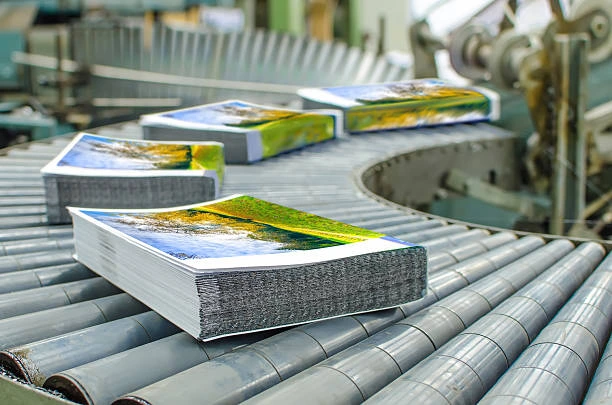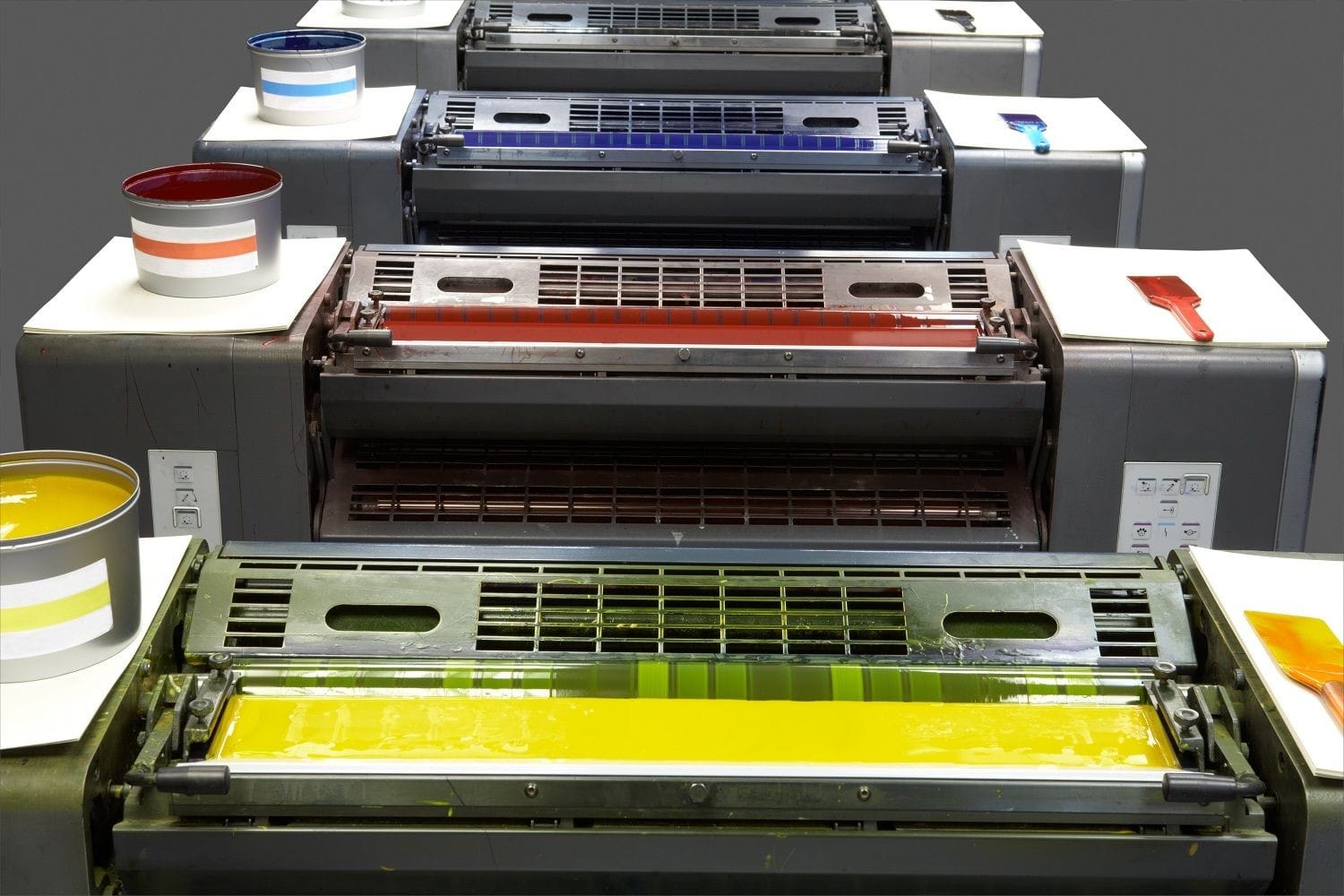The Vital Guide to Recognizing Litho Printing and Its Applications
Litho printing stands as a substantial approach in the printing sector, rooted in the principles of oil and water repulsion. This method not only supplies high-grade pictures but additionally accommodates numerous industrial requirements. Its applications vary from marketing products to product packaging, showcasing its adaptability. As the sector adapts to new technologies, the development of litho printing questions about its future and importance in a digital landscape. What exists in advance for this enduring method?

What Is Litho Printing?
Litho printing, a widely utilized printing method, counts on the concept of oil and water repulsion. This technique uses a flat printing surface area, generally a steel plate, which is dealt with to assure that the image locations are responsive to oil-based inks while the non-image areas repel them. The procedure starts with the production of a photo on home plate, usually through drawing or photo methods. When the photo is prepared, the plate is dampened with water, adhered to by the application of ink. The ink adheres only to the picture areas, enabling accurate reproduction of graphics and message. Litho printing is preferred for its ability to produce premium prints with great information and vibrant shades. It is frequently made use of in industrial applications, including papers, publications, and product packaging, showcasing its flexibility and efficiency in satisfying the demands of contemporary printing.
The Background of Lithography
Although lithography is a modern-day printing staple, its beginnings map back to the late 18th century when German playwright Alois Senefelder designed the method in 1796. Initially established as a technique for recreating messages and images, lithography utilized a level rock surface to produce prints via a chemical procedure. Senefelder's innovation permitted greater flexibility and creative expression compared to previous printing methods.By the 19th century, lithography gained prevalent approval, ending up being a popular selection amongst artists and publishers. It enabled the automation of pictures, maps, and posters, significantly impacting the printing industry. The method better developed with the introduction of lithographic presses, boosting effectiveness and quality.As the commercial change advanced, lithography adapted to meet the demands of business printing, leading the way for contemporary applications. Today, it stays an important method in numerous markets, consisting of posting, packaging, and art reproduction.
Exactly How Litho Printing Functions
A vital attribute of litho printing is its dependence on the concept of oil and water repulsion - litho printing. In this process, pictures are moved from a flat surface area, usually a steel or polymer plate, to paper. Home plate is dealt with to make sure that the locations intended for printing attract ink, while the non-image areas repel it due to their affinity for water. The printing begins by dampening the plate with water, which abides by the non-image locations. Ultimately, an oil-based ink is used, sticking just to the desired photo areas.When home plate enters into call with the substrate, the ink is transferred, creating a print. The litho printing process can generating high-grade photos with great information. It is commonly utilized for mass manufacturing because of its effectiveness and consistency, making it a preferred technique for industrial printing applications
Advantages of Litho Printing
One notable advantage of litho printing is its capability to produce high-quality pictures regularly, making it an ideal choice for business jobs. This printing method uses a flat printing plate, ensuring also ink distribution and sharp information. Litho printing is also renowned for its shade accuracy, enabling vivid and true-to-life reproductions, which is essential for branding materials.Moreover, it supports a wide range of substratums, including paper, cardboard, and also certain plastics, improving its adaptability. The process is economical for large runs, as economic climates of range decrease per-unit prices. Furthermore, litho printing has a fast turn-around time, enabling effective manufacturing schedules.Its resilience additionally implies that printed materials stand up to fading, ensuring that the last product keeps its aesthetic appeal with time. In general, these benefits make litho publishing a favored choice across numerous sectors, adding to its enduring appeal.
Applications of Litho Printing in Service
As businesses increasingly look for dependable and top notch printing solutions, litho printing becomes a principal in various applications. This method is specifically favored for creating advertising materials such as brochures, leaflets, and brochures, many thanks to its capacity to supply vivid shades and sharp pictures. Additionally, litho printing is frequently utilized for packaging remedies, permitting companies to develop distinctive labels and boxes that boost item appeal.In the field of corporate go to this website identification, litho printing is important in generating specialist stationery, company cards, and marketing goods, which help enhance brand acknowledgment. In addition, it is commonly made use of in the posting sector for printed materials such as books and magazines, where consistent top quality is paramount. Overall, litho printing's adaptability and effectiveness make it an essential device for services aiming to communicate efficiently and develop a strong market presence.
Artistic Use Litho Printing
Litho printing acts as a flexible medium in the domain of printmaking, offering artists an one-of-a-kind method to share their creativity. This method enables a vast array of imaginative applications, from standard prints to modern interpretations. By exploring the nuances of litho printing, musicians can harness its unique high qualities to boost their job.

Printmaking Techniques Introduction
The artistry of printmaking incorporates a diverse series of methods, with litho printing sticking out for its special strategy to picture production. This method counts on the principle of oil and water repulsion, allowing musicians to draw straight onto a limestone or metal plate with an oily medium. Once prepared, home plate is moistened and tattooed, transferring the image onto paper through stress. Litho printing is commemorated for its capability to create great details and rich tonal variants, making it a favored choice amongst artists. Additionally, the process is flexible, suiting both traditional methods and modern-day adaptations. This flexibility allows litho printing to bridge various imaginative designs, improving the printmaking landscape with its distinctive qualities and capacities.
Distinct Artistic Applications
Discovering the special imaginative applications of litho printing exposes its impressive versatility in different creative fields. Musicians use litho printing to create elaborate layouts and appearances, enabling for meaningful and in-depth jobs. The procedure assists in the recreation of brilliant colors, making it perfect for illustrations and art prints. Lots of modern musicians accept lithography for its ability to combine conventional strategies with modern concepts, resulting in cutting-edge art work. Furthermore, litho printing is commonly utilized in the production of limited version prints, improving their value and appeal. The responsive high quality of litho prints adds a distinctive measurement, drawing in collectors and art fanatics alike. Generally, litho printing stays a significant tool for go to this website creative expression, bridging timeless techniques with contemporary creative thinking.
The Future of Litho Printing in a Digital World
As the printing industry progresses, litho printing deals with the obstacle of incorporating digital modern technologies to stay pertinent. Methods focused on electronic integration, along with patterns in sustainability and innovation, will certainly shape its future - litho printing. Recognizing these dynamics is crucial for market stakeholders wanting to adapt to a swiftly altering landscape
Digital Assimilation Approaches
An expanding variety of litho printing companies are accepting digital integration methods to remain competitive in a progressively digital landscape. By incorporating electronic operations, these companies can simplify processes and boost effectiveness. This combination enables for real-time data administration and improved interaction between departments, reducing turn-around times markedly. In addition, digital devices allow better modification and personalization of published materials, dealing with specific client needs. Business are also taking on crossbreed printing options that combine conventional litho strategies with digital innovations, supplying adaptability in manufacturing. Leveraging information analytics assists in recognizing market fads and consumer preferences, allowing businesses to make informed decisions. On the whole, digital integration is ending up being important for litho printing companies intending to introduce and respond to developing market demands.
Sustainability and Technology Fads

Frequently Asked Concerns
What Products Are Commonly Used in Litho Printing?
The products typically made use of in litho printing consist of light weight aluminum plates, ink, water, and paper. Each element plays an important function in the printing process, making certain high-quality picture reproduction and reliable transfer of ink onto the substratum.
Exactly How Does Litho Printing Compare to Digital Printing?
Litho printing provides superior shade uniformity and quality for large runs, while digital printing stands out in short runs and modification. Each technique has unique benefits, accommodating various needs based on production scale and cost-efficiency.
What Is the Regular Turnaround Time for Litho Printing Projects?
The normal turnaround time for litho printing projects varies, typically varying from a few days to a number click for more of weeks. Factors influencing this timeframe include project intricacy, amount, and required finishing processes, affecting general manufacturing timetables.
Can Litho Printing Accommodate Personalized Sizes and Formats?
Litho printing can indeed accommodate personalized dimensions and formats, enabling versatility in design. This versatility enables clients to attain one-of-a-kind print end results tailored to their particular requirements, improving the total effectiveness of their jobs.
What Are the Environmental Influences of Litho Printing?
The environmental influences of litho printing consist of resource consumption, chemical usage, and waste generation. Innovations in lasting methods and environmentally friendly products are slowly decreasing these unfavorable results, promoting a much more ecologically accountable approach to printing.